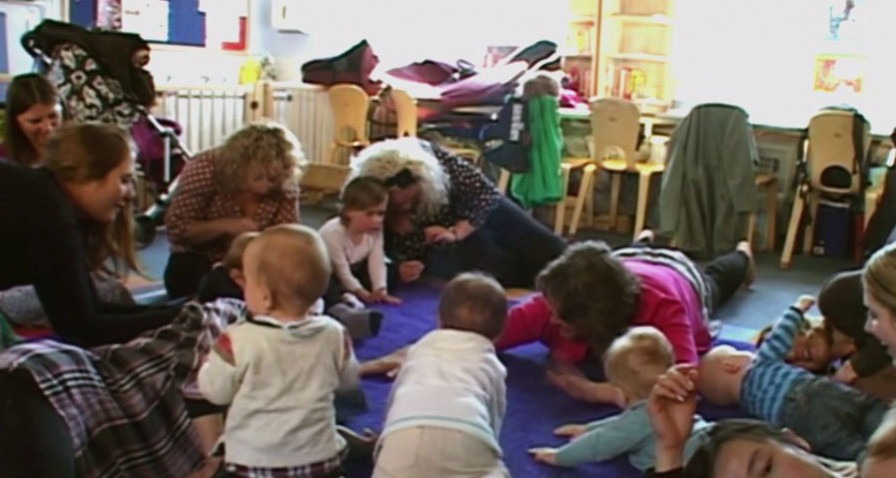LSO Discovery: A listening environment

LSO Discovery, the London Symphony Orchestra’s community and music education programme, has a long-standing early years strand and offers a range of opportunities in music for young children and their parents including weekly sessions, workshops and family concerts. This resource was created for the Youth Music Spotlighting module by Dr Susan Young, lecturer at the University of Exeter and Alison Harmer, film maker and editor, with the support of LSO Discovery.
Watch part of an LSO session unfold in real time. The practitioner notices and responds to a child’s actions and builds on this, eventually involving the whole group.
In talking about musical environment I have in mind not just the space and any resources, but also the music that is played and heard in that environment. Each session contains a lot of varied music; not just songs, but instrumental music or recorded music to listen to, move to. Most importantly Vanessa creates a listening environment, encouraging everyone to listen carefully, talking in whispers and drawing the children in to listen and models listening attentively herself. She has in mind a plan of the session in which it unfolds musically, with a quiet recorder tune to start which draws everyone in to listening, a song that visits each child in turn, a rise in pace and energy with a movement game and so on, until the session quietens with a final listening to lullaby music.
In order to centre the music and musical experiences, other aspects of the environment are pared down and uncluttered. Vanessa talks very little. She uses words to give simple, clear instructions to parents or children but otherwise often speaks very little, preferring to use gestures or modelling. As the sessions progress and familiarity builds, parents and children soon gain confidence to participate, and to participate in their own way, with little extra direction needed. Vanessa may make small comments to praise children, particularly the nursery age children, or to point out to parents something that their children are doing, but otherwise comments about participation are kept to a minimum.
Resources are also kept simple but good quality. There are some small hand-held percussion instruments that are used sparingly and a few small puppets, but the use of props and other material objects is kept minimal. Again, the sparing use of material things keeps the focus on the musical sound, on listening, on moving rhythmically, on singing and on joining in musically.
This clip shows the conclusion of a session with mothers and their babies and toddlers. The session was coming to a close with a quiet resting and listening moment. Vanessa then picked up on one baby tapping the floor, the double bass player joined in by improvising in matching pace and dynamic and the mothers and babies participated in varying ways. Notice how they are confident and free to ‘do their own thing’ within the structure and music offered to them – ‘give and take’.
Vanessa is not saying anything, but all the time checks around the group to be sure the small improvised activity is engaging and to decide how to continue or when to draw it to a close.
Obviously very few of us will have a double bass player on hand to improvise, but the activity could have developed equally well with just tapping and voice sounds – dum-di-dum or a made-up hummed melody.
Click on the links at the bottom of the page to see more videos and notes on key aspects of the LSO’s early years programme.
